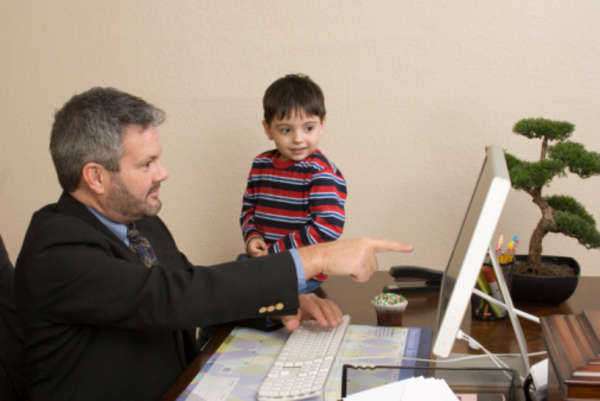
Adoption is a wonderful way to start or expand your family. It is a process that allows a child who, for various reasons, is unable to be raised by their biological parents, to become a legal member of a new family. Adoption can be a lengthy and emotional process, but it is a transformative experience that will shape your life as a parent forever. In this article, we will explore the various steps to adopting a child and provide information from government resources to help you navigate the process.
Step One: Understanding Adoption
Before starting the adoption process, it is important to understand what it means and what the different types of adoption are. Adoption is the legal and permanent transfer of parental rights from the birth parents to the adoptive parents. There are three types of adoption: domestic adoption, international adoption, and foster care adoption.
Domestic adoption occurs within the United States, and can either be open or closed. An open adoption involves the biological parents and the adoptive parents maintaining contact and sharing information, while a closed adoption eliminates contact between the biological parents and the adoptive parents. International adoption involves adopting a child from another country, and foster care adoption is the adoption of a child who has already been placed in foster care.
Each type of adoption has its own unique requirements, procedures, and challenges, and researching the different types of adoption and understanding the legal and social issues involved will help you make informed decisions during the adoption process.
Step Two: Choosing an Adoption Agency
The next step in adopting a child is to choose an adoption agency. All adoption agencies must comply with federal and state adoption laws, but you should research and choose an agency that makes you comfortable and meets your needs and requirements. Some agencies specialize in specific types of adoption, while others work with a wide range of adoptive families.
When choosing an agency, it is important to review the agency’s policies, services, and fees. Make sure the agency you choose is licensed by your state, and ask for references from other families who have used their services. The agency you choose will be your guide throughout the adoption process and will facilitate communication between you and the birth parents.
Step Three: Meeting Eligibility Requirements
Before you can adopt a child, you must meet certain eligibility requirements. To adopt a child in the United States, you must be a U.S. citizen, be at least 21 years old, and pass a criminal background check. Additionally, each state has its own requirements, such as completing a home study, a family assessment, and attending adoption training.
If you are considering international adoption, you will need to meet the eligibility requirements of the country from which you are adopting. The eligibility requirements for international adoption vary by country, but they generally include age, marital status, income, and health.
Step Four: Completing a Home Study
A home study is a process of assessing your physical, emotional, and psychological fitness to adopt a child. It is required in all adoptions, and the agency you have chosen will conduct this study. The home study process includes in-home visits, interviews with you and your family members, a review of your financial documentation, and an assessment of your health status.
The purpose of the home study is to determine whether you and your family are fit to provide a safe and stable home for a child. The home study report will be used to determine the best match for a child and to ensure that all legal requirements are met.
Step Five: Finding a Child
Once you have completed the home study, the next step is to find a child to adopt. If you are working with an agency, they will help you search for a child who matches your family and lifestyle. You can also find potential matches through the state’s adoption website, social media, or networking with friends and family.
In some cases, the birth parents will choose the adoptive family, especially in open adoptions. If you are adopting from foster care, the child or children will be assigned to you by the foster care system. It is important to be patient during this process, as it may take some time to find the right match for your family.
Step Six: Going to Court
When a match is found and a placement is made, the final step in the adoption process is to go to court. Before the adoption can be finalized, a hearing will be held to terminate the parental rights of the birth parents and to grant the adoptive parents legal responsibility for the child.
In some cases, the adoption hearing may take place in the state of the birth parents, and adoptive parents may need to travel to attend the hearing. The court will review the adoption paperwork and make a final decision on whether the adoption is in the best interest of the child.
Step Seven: Post-Adoption Support
Although the adoption process is complete when the final court hearing takes place, adoption is a lifelong process, and post-adoption support is essential. The support services and resources available to adoptive parents vary by state and agency, but they generally include counseling services, financial assistance, and access to support groups.
It is important to remember that adoption is a lifelong commitment, and adoptive parents should be prepared to provide emotional, financial, and practical support to the child throughout their life. Adoptive parents should also educate themselves on issues related to adoption, including identity and search issues, and be prepared to address those issues with their child as they arise.
Conclusion
Adopting a child is a transformative experience that will shape your life as a parent forever. The adoption process can be complex and emotional, but with the right resources and support, it can also be a rewarding experience. Understanding the different types of adoption, choosing the right agency, and completing the home study are important steps in the adoption process. Finding the right match, going to court, and seeking post-adoption support are also essential elements of the process. By following these steps and being prepared for the challenges and rewards of adoption, you can provide a loving and stable home for a child in need.
What is Adoption?
Adoption is the legal process within the realm of family law in which approved individualswho are not recognized as the birthparents of a child are permitted to assume guardianship of a child. Subsequent to the approval and authentication of legal adoption, parents undergoing the adoption process will be able to participate in the authenticity, substantiation, and validation concerning issues under the jurisdiction of paternity.
How to Adopt a Child
While the adoption process is lengthy, it is not impossible. However, due to the fact that the wellbeing of a child is a primary concern of adoption agencies and asocial legal authorities, the adoption process will typically focus on the investigation and analysis of the lives and details with regard to any or all prospective parents interested in adoption. The following steps may be required with regard to individuals interested in adopting a child:
Adoption taking place within the United States will typically be authorized by the individual state in which the adoption takes place; as a result, adoptions may be mandated by a variety of applicable governmental departments, ranging from theDepartment of Health and Human Services to the Department of Family Services. Subsequent to a petition for adoption, the following case details with regard to the prospective adopting parents may exist:
Investigation and authentication of residence within the specific state; individual states will vary with regard to the requirements of residence
Legality and regulations existing in the event that a single parent wishes to adopt a child may vary; furthermore, individual states vary with regard to their respective legislation concerning permission granted to homosexual couples to adopt – however, certain states may require the collective consent on behalf of married couples interested in adoption
Individual states require the adopted child to consent to their respective adoption in the event that they have reached a certain age; this age of adoption consent may range from 12 to 14 years of age.
Following the legal adoption of a child, the adopting parent – or parents will typically endorse the adopted child’s birth certificate in the form of a signature. The final step of the adoption process takes place when the adopting parents or parents have agreed to become the legal Guardian of that child.
This process may coincide with additional forms and fees required to be fulfilled on the part of the adopting parents; in certain cases, court-appointed officers may conduct visits in order to evaluate the living conditions of the adopted child.
The Revocation of Adoption
The duration of time in which contention, review, or dispute with regard to an adoption ruling varies from state-to-state subsequent to the finalization of the adoption decree in questionThe validity of any authorized adoption may be revoked in the event that an individual is presumed to be causing harm to a child subsequent to the adoption process; the following circumstances and infractions may result in the immediate revocation of an adoption – in addition to any or all supplementary criminal charges:
Neglect
Financial insolubility
Child Abuse; this can include physical, sexual, emotional, or psychological child abuse

























